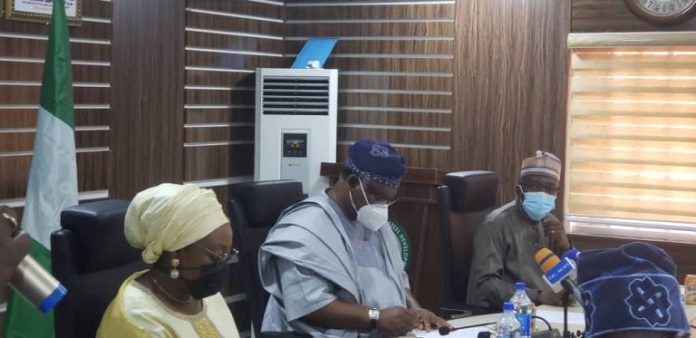The Federal government through the Federal Ministry of Mines and Steal Development (FMMSD) has launched the National Integrated Mineral Exploration Project (NIMEP), in 2018 to de-risk the mining sector and supply Geo-Science data.
This is in an ongoing effort to diversify the nation’s economy.
The project was established to exploit the country’s identified metallogenic belts for the exploration of gold, nickel, chromium, cobalt, rare earth minerals, lead-zinc, silver, copper, barite, and ore deposits.
Its objectives were to generate Geosciences information in Greenfield and Brownfield settings using integrated exploration methodologies in order to spur desired investment into the mining sector in order to generate foreign exchange, substitute for imports, develop local industries, create jobs, and create wealth along the mineral value chain.
Mr. Olamilekan Adegbite, Minister of Mines and Steel Development, made this known in Abuja after receiving the National Integrated Mineral Exploration Project (NIMEP) report that the ministry will begin mining and processing barite soon.
Barite is a naturally occurring mineral that may be found all across the country.
Adegbite noted that the policy would boost local production and attract investors, and that the Ministry would seek additional financing for natural resource exploration efforts.
Earlier , Dr. Abdulrazak Garba, Director General of the Nigeria Geological Survey Agency, disclosed that the project was working on the extraction of various mineral resources around the country.
Garba noted that the project’s design required international Competent Persons (CP) to be involved in contract execution and the consulting team to ensure compliance with international best practices.
The NGSA Director General stated that the exploration contracts were awarded following government and Bureau of Public Procurement vetting.
Meanwhile, one of the Project’s contractors, Dr Warwick Crowe, claimed that the research technique used was effective and would be used to investigate other minerals in the future.
Crowe went on to state that the research was divided into five stages, the first of which comprised desktop investigations, spectral geology, and the processing and interpretation of existing airborne data.
He went on to say that although geological mapping, sampling pitting, trenching, and sample preparation are finished in phase two, sample analysis from three media, ground geophysical survey and interpretation, and ground acquisition and interpretation are finished in phase three.
Drilling and analysis are the next steps, followed by data integration and reporting.

